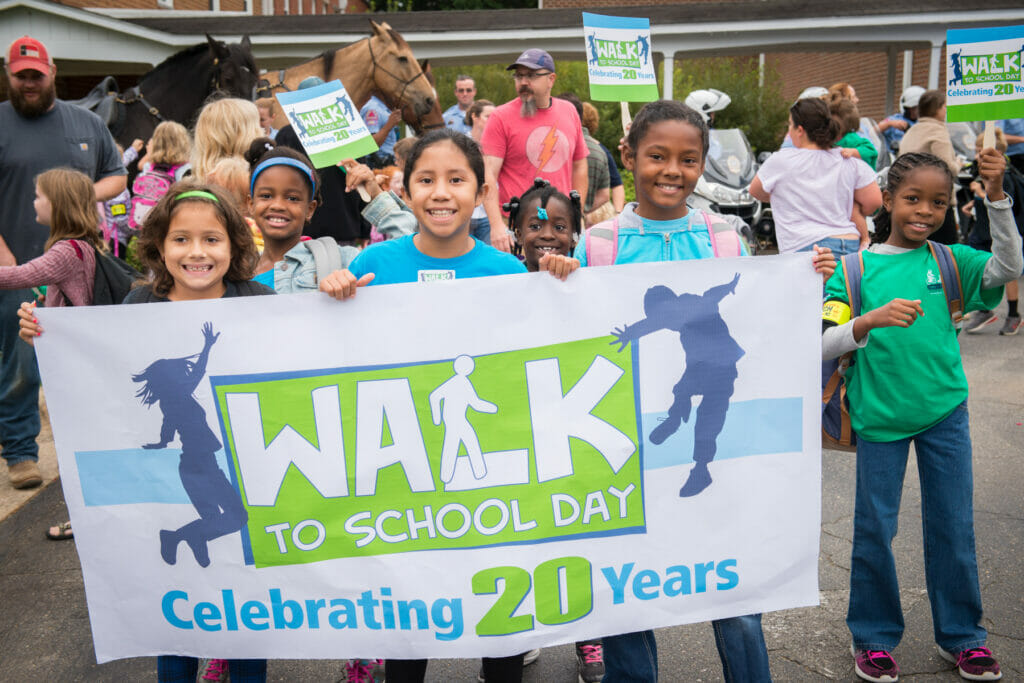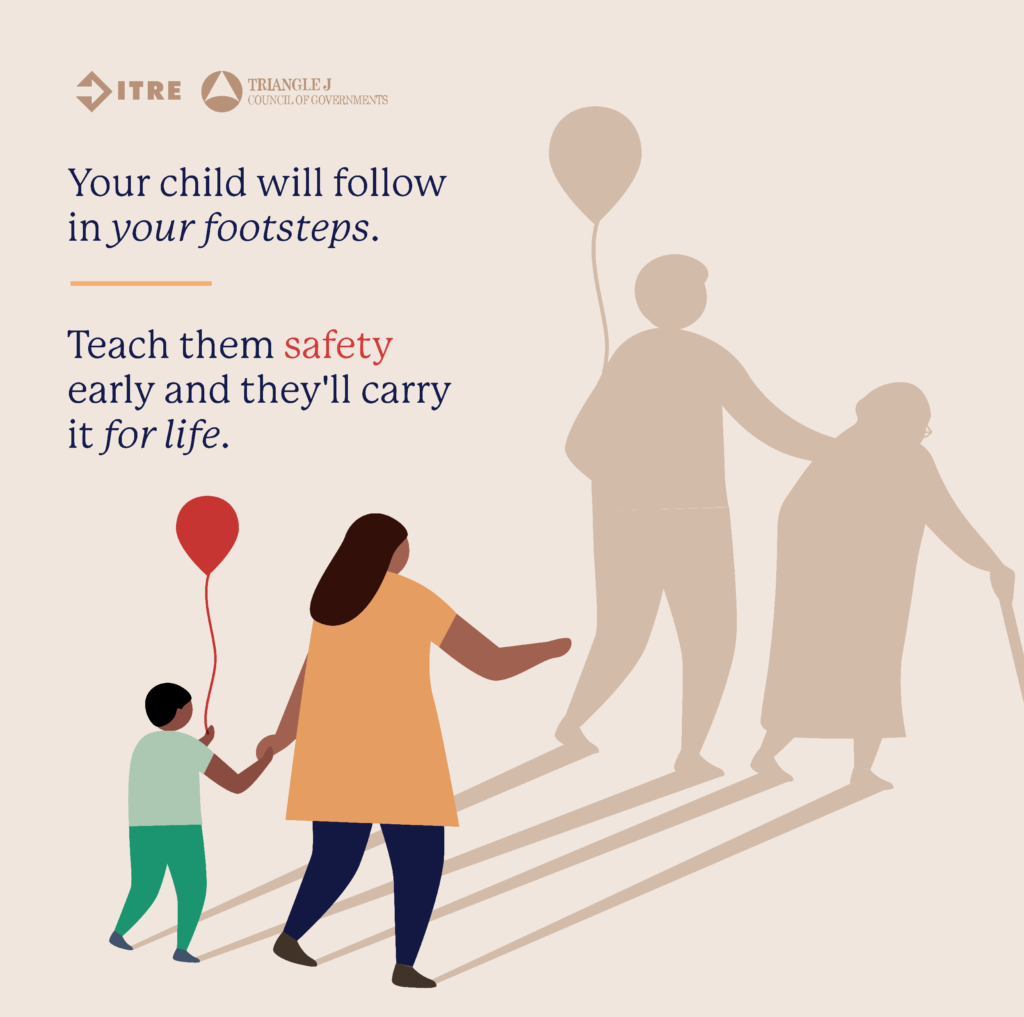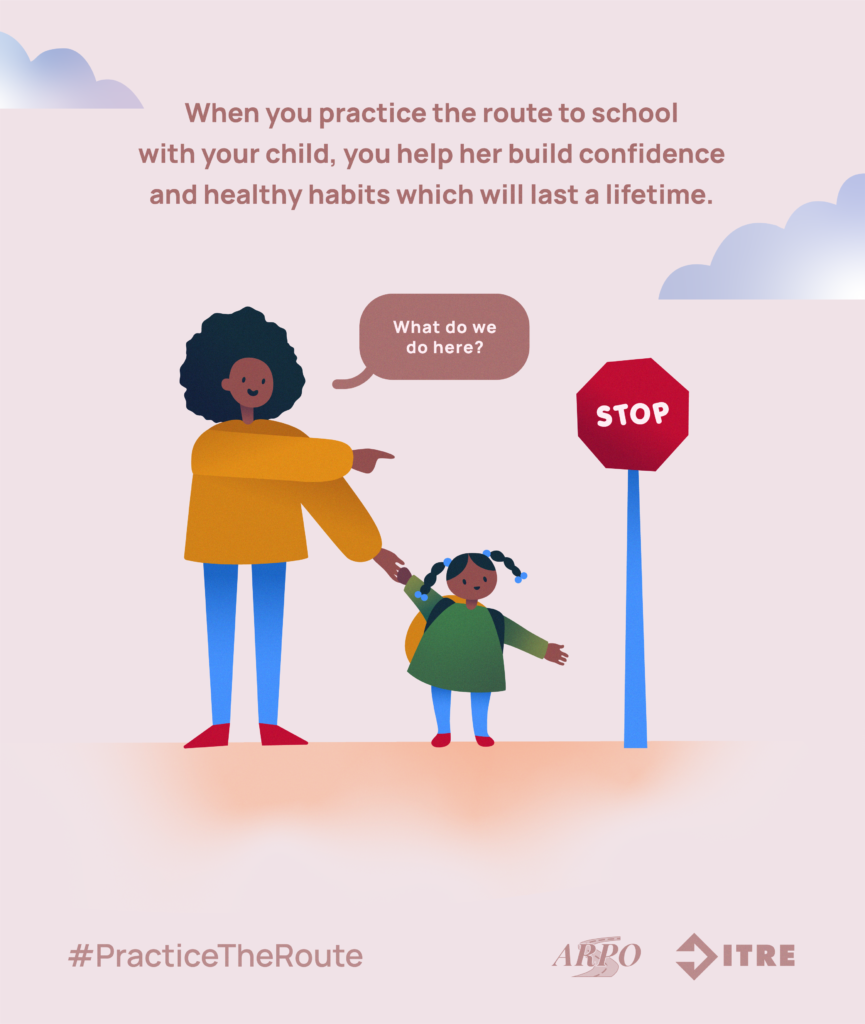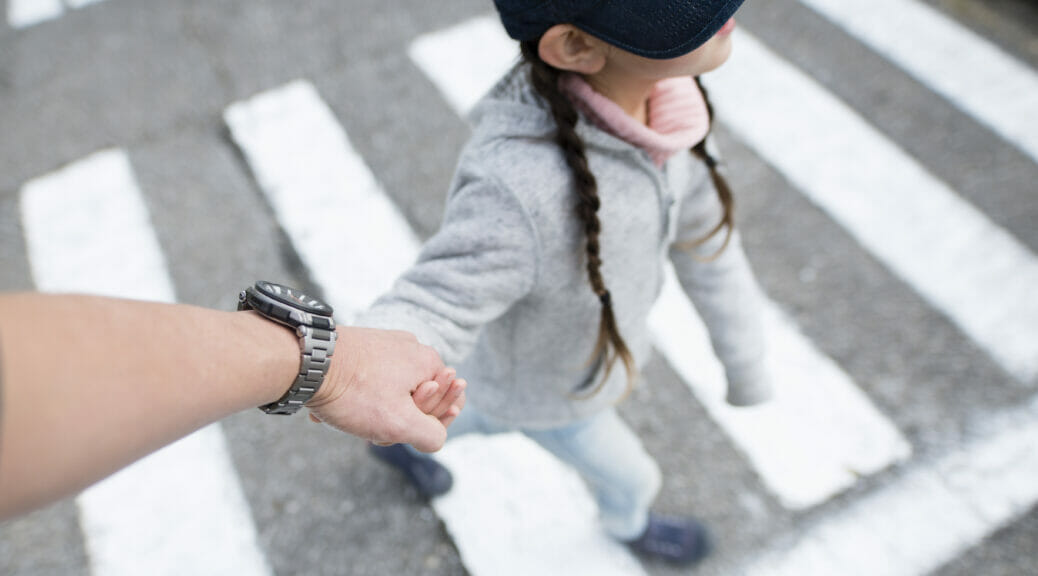“Mama look! A butterfly!” She giggles and points as a bright yellow butterfly dances past. It stops to sip nectar from a small flower near the sidewalk. You hadn’t noticed that flower before. You smile and pat her backpack as you continue down the sidewalk. The cars passing can’t possibly notice that flower – or the Cardinal that cheeps at the two of you from a branch above.
The air feels cool this time of the morning. You breathe in deeply and feel a shift in the weight on your shoulders. A gentle easing. You needed that.
As you approach the next intersection, she turns to you smiling. “Almost there!” She presses the crosswalk button while looking up at the sky. “That one looks like a shark Mama,” she says as she points above.
“Ah, I see it! Shark!” you say as you wait for the light. “Ok, what do we do now?” you ask as traffic begins to slow.
She grabs your hand and starts looking back and forth down the road. “Hold hands. Look both ways. Listen!”
As you make your way across together, you think to yourself that school drop-off has never been so sweet.
For many North Carolina families, school looks very different this fall. Whether your child is meeting in a classroom or settling into lessons from home, we invite you to join us for Walk in Your Community/Walk to School Day on October 7, 2020.
Each year, thousands of North Carolina kids participate in International Walk to School Day. From the famous Walking School Bus to large parades and everything in between, communities across the state find ways to celebrate walking to school.

Walking one mile to and from school each day is two-thirds of the recommended sixty minutes of physical activity a day.
National Center for Safe Routes to School
How to Participate
Walk to School
- If your child is attending school in person, make a plan to walk there on October 7. Registered school events in North Carolina are listed on the Walk Bike to School site, but you do not have to walk with an officially registered event to participate. If your child’s school is not holding an official event, consider inviting a few of your child’s friends or other neighbors in your area.
- If you live far away, pick a parking spot within a mile of the school and do the last leg of the trip on foot. By practicing the route to school with your child, you teach her/him safety and health skills that they will carry for life.
- To plan a Walk to School Day event at your school, visit the National Walk Bike to School site at http://www.walkbiketoschool.org/plan/how-to-plan/.

In 1969 about 48% of students ages 5-14 walked or biked to school but as of 2009 this number has dropped to just 13%.
National Center for Safe Routes to School
Walk in your Community
This year, for North Carolina kids who aren’t attending in-person school or are unable to walk to school, we have adapted Walk to School Day to include Walk in Your Community Day. To participate, kids and their grown-ups can go on a walk at any place of their choice. Share pictures of your walk online and join the conversation with #walkinyourcommunity.

Physical activity can positively impact academic achievement, student morning energy levels and attention, truancy and absenteeism, and can improve schools and their communities through social bonding and community building.
North Carolina Safe Routes to School
